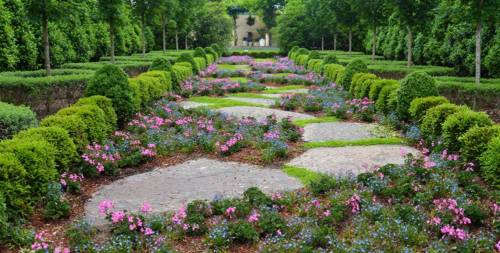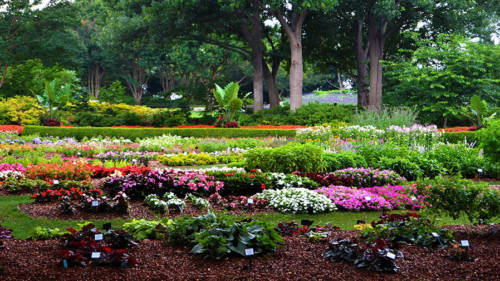Why The Dallas Arboretum Is Unlike Any Other
Dallas– at least historically– is a city that has not always been associated with greenery– but nestled at the edge of White Rock Lake in Northeast Dallas is the Dallas Arboretum, a lush 66-acres of staggeringly handsome gardens. Everything at the arboretum is grand, and executed to the utmost degree– one would be hard pressed to find a single petal out of place, which, for locals seeking a respite from the highways and concrete of downtown, is a welcome gift for nature-seekers.
Yet in spite of its size and superiority, the Dallas Arboretum lacks any arrogance or stiff pride; there is an undeniable hospitality about the space, a graciousness that tempers its scale. The park welcomes any sort of activity, from weddings to aimless afternoon strolls– though one can always count on steady procession of awed photographers, stopping every few feet to capture some exquisite bloom.
The Dallas Arboretum opened to the public in 1984, ten years after the non-profit behind it was first founded. The intervening period was occupied with fundraising, and procuring their current space, a merger of lands from two historic estates: the DeGolyer Estate (purchased in 1977) and the Alexander Camp House (acquired in 1980). With scenic views of the lake, the area was the preferred spot for the Dallas elite to build their homes. (Across from the Dallas Arboretum is the original Hunt mansion– legacy of 20th century oil tycoon H.L. Hunt, at one point reportedly the richest man in the world and the inspiration for the iconic 80’s soap opera, Dallas.)

McCasland Sunken Garden

Margaret Elisabeth Jonsson Color Garden

The Trial Garden

Crape Myrtle Allee

Rose Mary Haggar Rose Garden

Margaret Elisabeth Jonsson Color Garden
All told, the arboretum anticipates one million visitors this year, due in part to the immense boost in numbers that Pokémon Go inspired over the summer (for reference, Yosemite National Park had 4 million visitors last year). And there is a little something for everyone: the different gardens span the gamut of style, era, and atmosphere. There are cheerful color gardens, and a peaceful two-acre maple rill (home to 80 varieties of Japanese maple); there is an angular, formal-minded sunken garden and a moody, mystic fern dell, permanently enveloped in a slinking mist. The Lay Family Garden (yes, like the potato chips) has a more architectural approach to the outdoors, with boxy water curtains and streams that wind through the space, a koi pond and a stone grotto insulated by a waterfall (the best cool spot on a hot day). A pocket rose garden is compacted with 16 hybrid tea varieties, and pruned to have as many blooms as possible, so that the space (when in season) is permanently enveloped in a swirl of red, white, and pink petals. For the romantically inclined, there is Crape Myrtle Allee, with its wizened branches woven together overhead, casting a patchwork of dappled light along the ground.
“The park welcomes any sort of activity, from weddings to aimless afternoon strolls– though one can always count on steady procession of awed photographers, stopping every few feet to capture some exquisite bloom.”
Perhaps the most interesting feature– certainly for Dallas residents– are the arboretum’s two test gardens, which experiment with what can standup to the infamous Dallas heat, erratically intense winters, and unpredictable rainfall. Between 3,000 – 5,000 plants (largely ornamental) are tested every year and the results of their successes (and failures) are made available to anyone interested, from professionals to home gardeners.
Staggeringly, there are still several acres of the arboretum that have yet to be developed; an entirely edible garden– named “A Tasteful Space“– broke ground this September and is set to open in the fall of 2017. In addition to all the edible plants on display, the two-acre space will host tastings and cooking classes, and any excess produce will be used for the arboretum’s on-site catering.
Despite ongoing construction, the space is always shifting with and adjusting to the seasons. With fall approaching, prep is underway for the arboretum’s annual autumn festival, which turns pumpkins into sculptural mediums. Some 50,000 pumpkins of all different shapes and sizes are carved into houses and carriages– as if some lesser, more comical cousin of King Midas passed through, turning what he touched into fall squash. Almost any time of year the arboretum is worth the visit, however– even in the winter, it is decked in its finest, with displays installed throughout the garden bringing to life the lyrics of “The Twelve Days of Christmas”. For new and old visitors alike, the Dallas Arboretum is always offering something new to be enjoyed and appreciated, with endless opportunities for wonder.










































